INTRODUCTION
India is one of the most rapidly growing militaries in the world. They have evolved from a regional force with tactical capabilities to a growing strategic force with global reach. They are heavily dependent on foreign suppliers for equipment as their local industry hasn’t quite delivered as promised. But the ones in service are top quality indigenous systems. This article will cover the 10 most powerful weapon systems used by the Indian Armed Forces. It is interesting to note that even though most of the weapons in the list are foreign supplied, the Indians have modified many of them to suit their requirements. They are known for purchasing well-known platforms and integrating them with subsystems from around the world to create a lethal system which would turn out better than the original. This makes them a force to reckon with. The order of weapons in the article is entirely based on my analysis and opinion. I haven’t included strategic nuclear weapons and their delivery platforms. After over a hundred fan requests in the past month, Defencyclopedia brings you this article. So sit back and enjoy reading it.
-
Pinaka MLRS

The Pinaka was India’s long-range replacement for the vintage BM-21 Grad MLRS (Multiple Launch Rocket System). It entered service in 1998 as a 40 km range system and consists of 12 rockets mounted on an 8×8 truck with NBC protection. An improved variant with 65 km range rockets is currently in service. These are highly networked rocket launchers and operate in conjunction with Weapon Locating Radars, Battlefield Surveillance radars, Unmanned Aerial Vehicles and long range IR and Optical sighting systems which enhance their accuracy and effectiveness in combat. DRDO has teamed with Israel Military Industries (IMI) to install a GPS guidance system on the rockets to use them for precision attacks. They have also been combat proven in the cold and high altitude regions during the Kargil conflict in 1999.
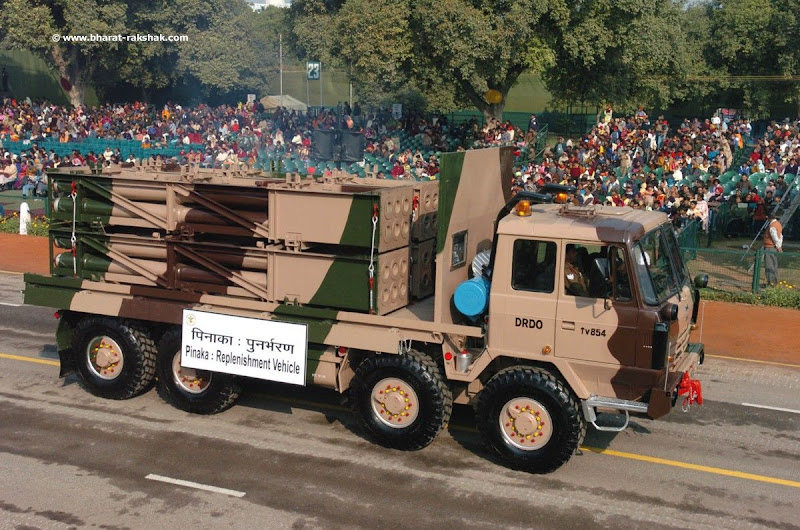
It is interesting to note that the Pinaka is 10 times cheaper than its American equivalent, the M270, while offering similar or better performance! A Pinaka battery has a total of 288 rockets on launchers and replenishment vehicles. The India Army has reportedly ordered over 15 batteries and 5000 rockets are being produced per year. A future variant of Pinaka with 120 km range is in development and it would be in the same class as the Russian Smerch heavy rockets.

-
PAD/ AAD Ballistic Missile Defense (BMD) System

The Indian BMD program raised eyebrows when it was first announced and has come a long way since. It has been successfully tested against a short range ballistic missile and is reportedly deployable at short notice to protect major cities. Two interceptor missiles, the PAD (Prithvi Air Defence)and the AAD (Advanced Air Defence) along with the Green Pine radar form the core of this system. The PAD is an exo-atmospheric interceptor with a ceiling of over 80 km and a range of over 2000 km. It is used to intercept ballistic missiles which are travelling outside the Earth’s atmosphere. The AAD is an endo-atmospheric interceptor with a range of 250+ km and a ceiling of 30 km. It’s used to intercept short-range ballistic missiles. Both these missiles initially guided by an Inertial Navigation System (INS) and have an active radar seeker for homing in on the target.

The long-range Swordfish radar is used to track and provide fire control to these missiles. This Israeli radar has a range of 800+ km and can be used for tracking enemy missile launches and trajectories. India is upgrading this radar to increase its range to 1500 km. This will be used along with upgraded variants of the PAD/AAD missiles which will have a longer range and a higher flight ceiling. It is said that the AAD missile can be used as a long-range SAM to shoot down enemy aircraft and cruise missiles as well. This would make India one of the few operators of 250+ km range SAMs. The PAD and AAD missiles working in tandem are said to have a hit probability of 99.8% against enemy ballistic missiles.
-
NaMiCa (Nag Missile Carrier)
This is a relatively unknown weapon that is developed by India. The core of this system is the 3rd generation Nag Anti-Tank missile mounted on a modified BMP-2 chassis. It contains 8 Nag missiles in armored box launchers plus a further 8 for reload with a complete optical and IR sensor suite to detect enemy tanks. These missiles are fire and forget and have a top-attack capability which allows them to target the vulnerable top part of the tanks. The Nag has a tandem High Explosive Anti-Tank (HEAT) warhead which enables it to penetrate any armour in the region. It has successfully detected targets at 5 km and engaged them in day and night conditions and has demonstrated its ability to destroy enemy tanks. The most unique ability of this system is its amphibious capability, which allows it to be cross any water body in the battlefield.

This weapon system is very unique as very few armies possess similar systems. The Indian Army has placed an initial order for 13 Namicas and 443 Nag missiles. They have projected a requirement for 200 Namicas and 7000 Nag missiles. The Namica will form an integral part of Indian Army armoured formations. It will spearhead tank divisions and eliminate high-priority enemy armoured targets at long ranges. Future variants may incorporate longer ranged Nag missiles.
-
P-8i Neptune

India has a 7500 km long coastline and hundreds of islands which need protection. The water bodies surrounding India are expansive and perfect for hostile submarines to lurk in. That’s where the P-8I comes in. It was chosen for its excellent endurance and sensor suite which is unequalled by any other ASW aircraft. It has a mission endurance of 4 hours at a distance of 2000 km from base. This means that it can fly 2000 km from base, hunt submarines for 4 hours and then fly back 2000 km to base on just its internal fuel. The fact that it is essentially a modified commercial airliner makes its maintenance very easy. The P-8I has a long-range search radar in its nose and the Indian variant is unique in having a Magnetic Anomaly Detection (MAD) boom at the aft to hunt submarines. Also, the Indian variant replaces several electronics systems with Indian versions.

It can carry 120 sonobouys internally and 6-8 Mk-54 torpedoes in its bomb bays along with 4 Harpoon missiles under its wings. This allows it to engage a whole range of surface and underwater threats. The P-8I thus gives the Indian Navy the ability to project power in the Indian Ocean and hunt submarines thousands of km away from their coast. India currently operates 8 aircraft with 4 more on order. They have an option to purchase 12 additional aircraft at a later date, which I’m sure they will after retiring their Tu-142s in the next decade.
-
T-90S Bheeshma

Being an operator of over 5000 T-55/72 tanks, it was natural that the Indian Army chose the T-90S as their replacement. They were first procured hurriedly from Russia in response to its neighbor’s attempt to purchase the T-80 and Abrams tanks. It weighs just 48 tons and has a crew of 3 which is made possible by the use of an autoloader for the 125 mm smoothbore gun. The unique feature of this tank is its ability to fire the Invar anti-tank missile from its barrel. The other special feature is that, even though the 12.7 mm machine gun mounted on the turret is manually operated, it can also be remotely controlled from inside the turret by the commander. The Indian variants have indigenous Kanchan ceramic armour which is topped by a layer of Explosive Reactive Armour (ERA). It is powered by a diesel engine which makes maintenance easier and reduces fuel consumption compared to the gas turbines of the T-80.
It is said that the Indian T-90S are downgraded variants of the Russian T-90A, but the Indians have fitted it with Israeli, French and Swedish sub systems and have made it possibly better than the Russian variant itself. It is slated to be fitted with the Saab LEDS-150 Active Protection System (APS) which will give it a 3-layered defense against enemy anti-tank munitions. The first layer is the APS, the second layer is the ERA and the third layer is the Ceramic armour. The T-90S can be easily deployed anywhere as it can be airlifted by Il-76 and C-17 transports of the IAF. India operates around 600 T-90S and the eventual number by 2020 is expected to be around 1500 tanks.
-
INS Vikramaditya and Kolkata Class destroyers
The 5th place is tied between India’s advanced Kolkata class destroyers and it’s aircraft carrier INS Vikramaditya. Both are extremely powerful assets which will operate together in order to project power and carry out missions.


India’s latest aircraft carrier, the INS Vikramaditya is the largest ship ever operated by them. This 45,000 ton refurbished carrier is currently the most powerful asset in the Indian Ocean. It has the capacity to deploy 24 MiG-29K fighters along with 6 ASW/AEW helicopters. This formidable combination gives the Indian Navy a very useful power projection tool. The carrier has a Russian electronic and sensor suite which is said to be powerful enough to prevent it from being tracked by powerful airborne radar systems. Though currently unarmed, the carrier will receive the Barak SAM for self-defense during its first refit. The carrier uses a ski jump to launch fighters and arrestor wires to recover them, classifying it as a STOBAR carrier.


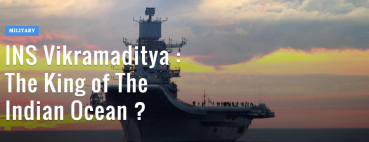

The Kolkata class is the first modern Indian destroyer. Indigenously designed and built, this class of 3 ships will add considerably to the capability of the Indian Navy. It is also the first Indian warship to use an Active Electronically Scanned Array (AESA) radar, the MF-STAR which has 4 static panels instead of a single rotating panel. This Multi-Function radar also allows for the replacement of a dozen other smaller search, track and fire control radars with a single system.


Its main armament is a battery of 16 vertically launched BrahMos supersonic long-range Anti-Ship missiles. This is by far one of the deadliest missile armament of contemporary warships. It can hit ships at ranges of around 300 km with extreme accuracy. The primary SAM is the Barak-8 Long range surface-to-air missile (LRSAM). This modern missile is lightweight, accurate and can hit targets up to 90 km away. The ship also has anti-submarine rocket launchers, torpedo tubes, 76 mm main gun, 30 mm Gatling guns and a dual helicopter hangar. Overall it is a very balanced and highly capable multi-role destroyer.
-
Phalcon AWACS
India was late in entering the Airborne Early Warning and Control System (AWACS) scene, but they did so with a bang, by procuring what is described by the FAS as the most advanced AWACS in the world. It consists of an Israeli Elta EL/W-2090 radar mounted on a Russian Il-76 aircraft. This radar is a 360 ° Active electronically Scanning Array (AESA) which is mounted inside a dome on top of the Il-76. The specialty of the radar is that it is stationary as its beams are electronically steered as well, which eliminates the need for the radar to be steered mechanically. This allows it to track targets 10 times faster when compared to well-known systems like the E-3 Sentry. It has an integrated IFF system, Electronic Counter Measures (ECM) and ECCM suites for self-protection, Electronic Intelligence (ELINT) for collecting data about enemy radars and monitoring communications and SatCom systems.
The 3 Phalcons are an invaluable asset for the Indian Air Force and act as major force multipliers. They can detect targets hundreds of km away and such a feature can prove to be vital in mountain and desert regions where ground based radars are not widely deployed. They can track targets simultaneously and guide fighter jets and SAMs to intercept them. The probability of detecting cruise missiles and repelling surprise enemy air attacks is very high if such a system is employed in combat. They are frequently deployed with fighter escorts and they can be vectored to intercept long-range threats. India is planning to procure a further 2-3 such systems.
-
INS Chakra

After acquiring the Akula II class SSN Nerpa from Russia on a ‘lease’ for 10 years, the Indian Navy gained the ability to provide a long-range underwater escort for their carriers and destroyers. The INS Chakra is modified for Indian needs and carries a mix of Torpedoes and Klub Anti-ship missiles which can be fired from the torpedo tubes. There are reports that India will acquire another Akula SSN, which is currently under construction.

-
BrahMos Missile
This is undoubtedly the most famous weapon that India has. It was the result of a joint venture between India and Russia to modify the Yakhont missile for Indian needs and make it into a universal missile which could be launched from any platform. This 9m long missile which weighs 3 tons has now become the backbone of the Indian Defense forces as a long-range standoff weapon. It is currently employed by the India Navy on most of their major warships. Indian Army has inducted 3 regiments and the Air Force is conducting trials for the air-launched variant. The air-launched variant has a reduced weight of 2.5 tons and 1 missile can be carried under the fuselage of the Su-30Mki.


The next generation of BrahMos is named as the BrahMos NG. It is basically a smaller version of the current BrahMos with similar performance and minor improvements. The NG will feature new gen micro-electronics and advanced composites which will drastically reduce its weight. The new smaller ramjet will also contribute to the smaller size and reduced weight. All the branches of the Indian military have expressed interest in the NG variant.

This missile has been covered in detail in my article CAN THE US NAVY SHOOT DOWN THE DEADLY BRAHMOS MISSILE ?
-
Su-30Mki

If there is one aircraft that has defined the Indian Air Force in the 21st century, it’s the Su-30Mki. This is a long-range, multi-role, supermaneuverable 4.5+ gen fighter which is built according to Indian specifications. The baseline Su-30Mk from Russia was modified with French, Israeli and Indian avionics to create the ultimate Su-30 variant for India. It became the Su-30Mki where ‘i’ stands for India (Indiski). After realizing the combat potential and versatility of this amazing fighter, the IAF placed an order for 272 aircraft which makes India the largest Su-30 operator in the world.

The Su-30Mki is the bread and butter of the IAF as the rest of their fleet consists of legacy 4th gen fighters which have just a fraction of the capabilities of this fighter. With its 4000+ km range, 12 Hardpoints for 8000 kg of weapons, PESA Bars radar, it outclasses any other fighter in the region. It is safe to assume that 1 Su-30Mki can do the job of 2 MiG-29 and 2 Jaguar combined. It is currently used for air defense, reconnaissance and ground attack. The Su-30Mki is evolving into a cruise missile platform for the IAF. By 2016, it will be integrated with BrahMos and Nirbhay cruise missiles which would give it strike capabilities never before imagined by the IAF or its rivals. It also is integrated with several indigenous and imported electronic jamming pods and anti-radiation missiles which make it a deadly platform for Suppression/Destruction of Enemy Air Defense (SEAD/DEAD) which is the most important part of modern warfare to sanitize enemy threats.
The origins of the Su-30 has been covered in detail here
CONCLUSION
The weapon systems covered in this article give you a brief idea about the capabilities of the Indian Armed Forces. Equal importance has been given to army, naval and air force weapon systems. Many weapons Arjun Mk2, INS Vikrant aren’t on this list as they haven’t entered service and are still in developmental/testing phase at the time of writing. Since the list has only top 10 weapons, i couldn’t fit in several powerful weapon systems. Only matured weapons systems have been covered here.
If you enjoyed reading this article, rate it below!
You may also like
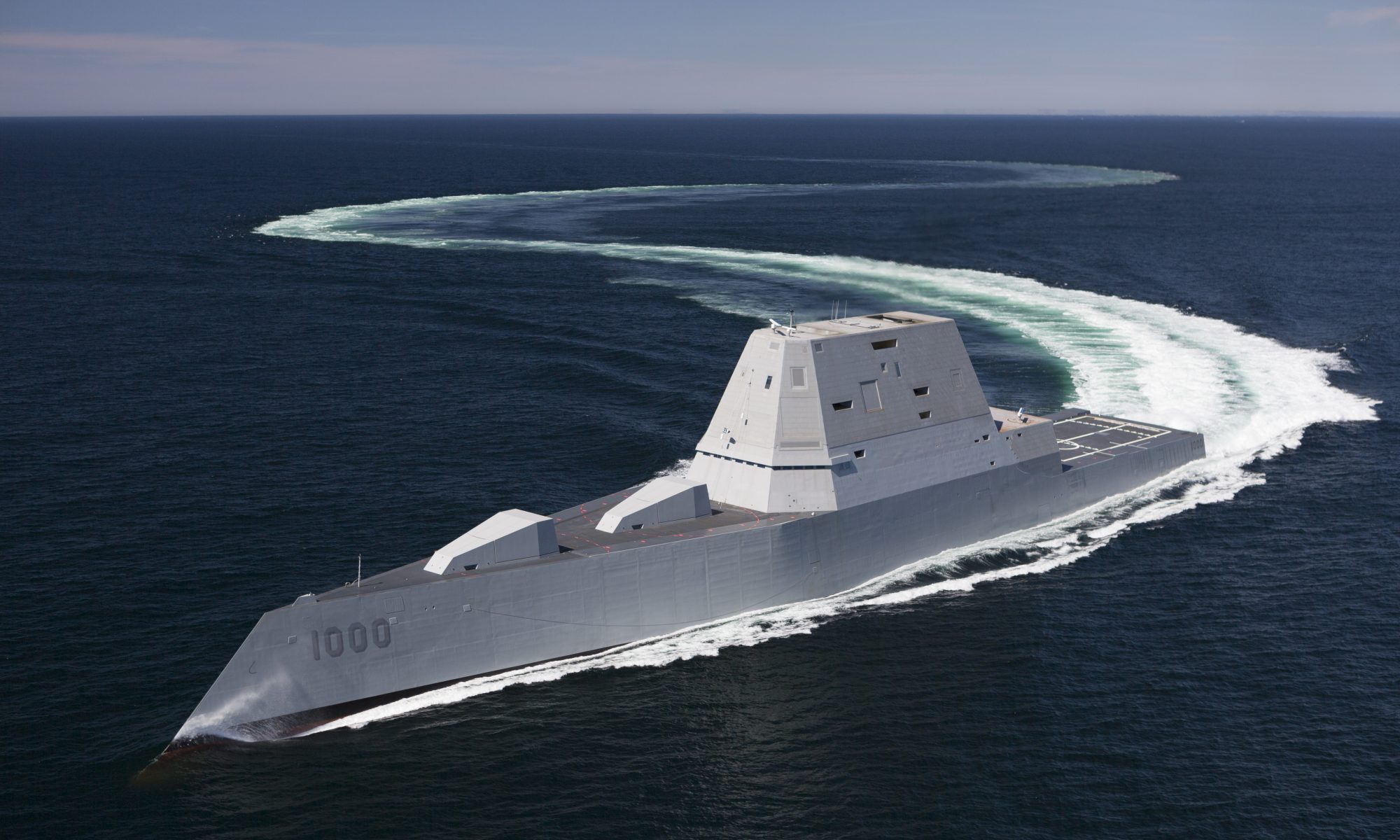
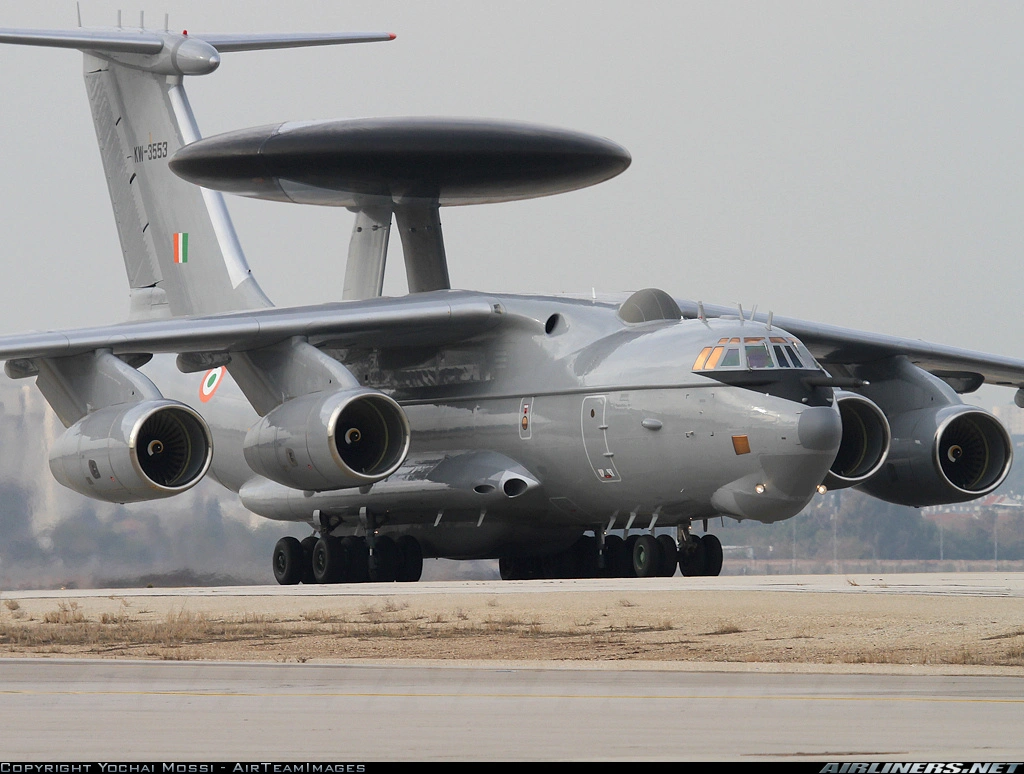

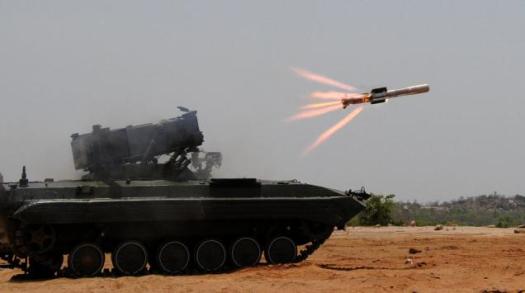
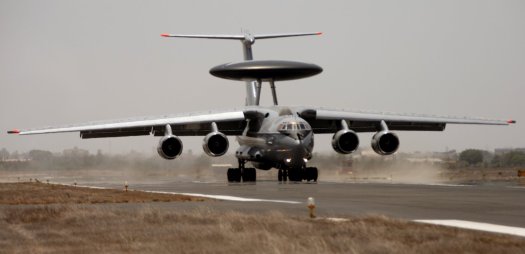
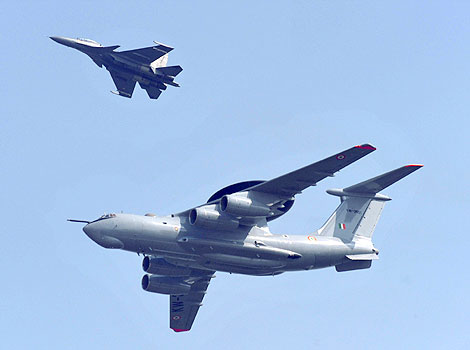
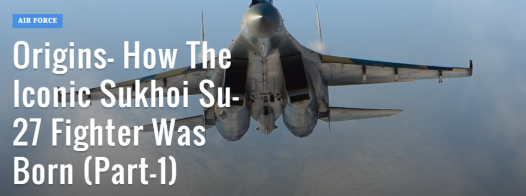

I have been waiting for this article from long time .You have done a tremendous job on this.Thanks for sharing this information with us 🙂
LikeLiked by 1 person
Thank you. I put a lot of effort in this article. Glad you enjoyed it. 🙂
LikeLiked by 1 person
Can the Newly Launched INS Kalvari launch nuclear tipped Missiles??? If so what are the Missiles can be Used???
LikeLike
The INS Kalvari will be fitted with Exocet missiles. These anti-ship missiles will be armed with a conventional warhead only.
LikeLike
good info, and thanks for share, good luck bye
LikeLike
Thanks
LikeLike
salute u…
LikeLiked by 1 person
Good job dude.. Expected brahmos would top the list.. ☺☺👍👍👍
LikeLike
Thank you.
LikeLike
I think there’s bit of change in Nag missile system,the Nag which is based on the carrier NAMICA is cancelled.Army has said there are many limitation in carrier like The Indian Army has sought additional features such as a panoramic sight for two commanders, against the present system of having only one such facility for the gunner.So it’s not procure by our Army.I got Source.Pleas reply.
LikeLike
Ok. So is the BMP-2 chassis canceled or is the program canceled ? And what new changes will be made ?
Do give me your source.
LikeLike
http://www.defencenow.com/news/156/nag-missile-induction-delayed-as-indian-army-seeks-changes-in-nag-carrier.html
LikeLike
thanks bro…i am a dedicated defense enthusiast and your posts are like epics to me…grand salute..!!!
LikeLike
Thank you. I’m glad you enjoy my articles 🙂
LikeLike
What about the Arjun MBT it’s better in many aspects than the T-90S bhimsa ?
LikeLike
The Arjun Mk2 is better than T90S on many aspects. But it hasn’t entered production and is still in testing. Hence it doesn’t feature here.
LikeLike
You nailed it bro …
LikeLike
Thanks
LikeLike
Sir the whole list is really great and is and very accurate.But,I think that INS Kolkata or Kolkata class destroyers could have been included.Rest all is great according to the conditions specified(like excluding WMD/nuclear warhead capable missiles and those in testing etc. ).
I would give it 10/10 (but please explain the kolkata part 🙂 ). Thanks for the post. We were all waiting for it,
LikeLike
Thanks. I wanted to include Kolkata, but it currently doesn’t have its barak-8 missiles. So I don’t consider it a mature weapon system for now. Plus I wanted to keep a balance between army , navy and air force weapons.
LikeLike
Mr NRP I Sincerely appreciate the effort and time you have put in to compile this beautiful article .I really enjoyed it and I’m really proud of my country and especially the armed forces.Please work on your next one I can’t wait to read it.
LikeLike
Thank you. I’m glad you enjoyed it.
LikeLike
waiting for your next article
LikeLike
PLEASE WRITE ON TOP 10 MILITARY WEAPONS OF CHINA……
LikeLike
I will
LikeLike
thank you…….it was quite informative……experienced a new arena of….info………loved it….
LikeLike
You’re welcome
LikeLike
I love and Enjoy reading your Articles N.R.P. and Your work is really commendable. The hardwork you put in is worth appreciating .
LikeLike
Thank you 🙂
LikeLike
Proud to be an india, Jai Bharath
LikeLike
Really a good information u have share . but though various weapons are not included in ur list like Prithvi, Agni, Dhruv, etc. but though I like information.
LikeLiked by 1 person
Great Article, Good Job. I appreciate it.
Few things, I’ll recommend you to recheck –
India operates more T-90s than Russia itself, around 1000.
INS Kolkata should be included.
INS Arihant should be included.
I really enjoyed your article! I gurantee you, this will be your most popular article yet.
LikeLike
Piyush. I can’t include more than 10 weapons in a top 10 article 😀
And this is already my most popular article in less than a day 😉
LikeLike
& yes, Agni V should definitely be included in the list.
LikeLike
Waited for a long time for this article and i really enjoyed reading thisthis. Thanx N.R.P for this awesome article. I wud love if u write about tejas and where does it stand among other world class fighters. BTW thnx 4 this article.
LikeLiked by 1 person
Thanks Govind. I’ll try to make an article on the LCA Tejas.
LikeLike
Reblogged this on rajeevmauryamaurya5.
LikeLike
In your above posts on the top ten of India, my quiry is, why we do not have US makes, when most of US products are evaluated as the best and No.1 of its category.
. Even, in your top ten list (of India), most of ours are Russian make. Already, the Russian made Migs have taken numerous lives of Indian Pilots, keep falling down, besides consuming the huge cost invested while they were bought.
Do we have such threats with other Russian products, on which we have invested huge?
How does the capacity of India can be evaluated with these top tens, to compete against China?
LikeLike
I think you have a big misconception here. US products are great but most of them have equally good Russian products. The problem with US products us that they are designed for American and NATO needs and most of these products don’t suit the Indian requirements.
Where as Russian products are more suited to Indian requirements. They provide better ToT and are more affordable. India will hence continue to rely on Russian products for the majority of its armed forces. However they are procuring American products to replace several Russian ones which aren’t as good.
LikeLike
Thanks for this informative article. I wish you could post an article a day. I know it is greedy to say this even after knowing the amount of time and effort you put up with every article. But can’t help it. Keep up with your great efforts. Thanks 🙂
LikeLiked by 1 person
This is best article i have seen ! very good job 🙂 i have one suggestion..i read a lot of blogs and articles, and i think it would be better to mention other important weapons below the top 10, that can’t be in top 10 but like deserved to be mentioned. i have seen it other blogs so i thought it would a better idea because i totally loved the way you have presented it n i would have enjoyed to see more that deserved to mentioned even though they can’t be in top 10 🙂 I appreciate your effort ! best article i ever saw.. thank you!
LikeLiked by 1 person
Thank you. If you’ve noticed, I’ve actually mentioned some weapons in the conclusion which haven’t made it to the list. 🙂
LikeLike
This is a very beautifully written article till date i have seen on Indian military might. We may not have the strength in numbers but the quality of defense is a sheer class. I personally am a fan of T-90 and Sukhoi SU-30 MKI but it was good to know we are almost as good in other fields too. Keep up the good work.
LikeLike
Thank you.
LikeLike
sir excellent work
thank you so much
LikeLike
Great article, I was wondering if you could write an article about the top special forces, their training methods and what types of weapons they carry.
LikeLike
Thank you. I’ll keep it in mind surely.
LikeLike
Great work. THANKS FOR UPDATES.
LikeLike
Thank you.
LikeLike
I was right that shukhoi 30 mki will be top 1 of Indian defense
Thanks sir ,
LikeLike
You’re welcome
LikeLike
Thanks Sir for the article , it is really nice..
There is a proverb ”keep your friends close bt your enemies closer”
So can u write a blog on the topics below???
1. Top 10 most powerful weapons of the Pakistan Military
2. Top 10 most powerful weapons of Chinese Military
LikeLike
I am planning to write about China.
LikeLike
thanks for the artical. your articals are always excellent. But does India really placed an order of 314 Su-30 MKIs? I think India ordered 272 MKIs. And I think INS Kolkata class and it’s follow on destroyers must be on the list INS Vikraamaditya on No 3.
LikeLike
Thank you. According to official UAC reports, India has ordered 314.
And I can’t include INS Kolkata because it’s air defence systems aren’t operational as of now and the follow on vessels are still under construction. And it would mean too many naval weapons on the list. I have maintained a balance between all 3 branches.
LikeLike
thanks for the artical. your articals are alsways excellent. I think INS Vikramaditya should be No. 3 and INS kolkata and it’s follow on destroyers must be on this list. And please tell me that does India really placed 314 Su 30 MKIs? I think India placed 272 MKIs on order?
LikeLike
Reblogged this on Sourabh_Chaturvedi and commented:
One of the best Synopsis of the Indian Armed Forces !
LikeLike
Many many thanks for us great effort.
LikeLike
Thanks for the article, perhaps you can go into the details individually on latter date..it will make for a good artcile
LikeLike
I have gone into the details of several weapon systems in the article and the links have been provided. Have you checked it out ? 🙂
LikeLike
Dude awesome compilation….thoroughly enjoyed your work…though I felt Arjuna mk2 and Agni 5 was missing….Having read a lot of your articles before you have a profound understanding in all matters defence …I would love to read an article on LCA tejas and another comparison on jf-17 …I am looking forward to it.
thanks again Bro
LikeLike
Thank you 🙂 I’ll try to do one.
LikeLike
Thanks, waiting for next article.
LikeLike
Great read. Excellent article it’s been only a few hours for me on your website but I’m already addicted to it. Would you be interested in writing about the future of our Indian defense scene. Systems we might procure and systems we might develop. Also if you could mix political articles involving various countries and associations that would be great.
LikeLike
Hi Prasath
I’m glad you enjoyed the artices. I will definitely try to write about the future of Indian Military as it looks very interesting and promising. However i stay out of political analysis and focus only on technical analysis.
LikeLike
As a layman, I have thoroughly enjoyed reading your analysis. Do you have any thoughts about the relevance of strategic bombers given the advances in missile technology?
LikeLike
Strategic bombers aren’t bombers anymore. All US and Russian strategic bombers are now converted into strategic cruise missile carriers. Bombing is their secondary role.
LikeLike
India entered into a deal of purchasing of MMRCA Rafael. Can you tell me what is the meaning MMRCA here? (not fulform of acronym but elaboration of what is meant by ‘multi-role’ ?
LikeLike
Multi role fighter is one which can carry air to air and air to ground weapons and deliver both with equal precision.
The aircraft should be able to fight it’s way to a target, bomb it and then return.
LikeLike
One more question as I am aero enggr graduate and going to give UPSC (IAS) interview next month so probable question could be..Why did India choose Rafael over Typhoon & other fighters? Few technical and strategic reasons I know but I wanted to know from the point of view of an engineer. Thanks!
LikeLike
I’ll explain from the point of view of an engineer since I’m one myself. Both are excellent aircraft, but India has different points which it prefers hence the Rafale has the edge.
● Rafale has a better availability rate when compared to the Typhoon , and this makes a huge difference in a war.
● Rafale has a better integrated electronic warfare and countermeasures suite which can jam most existing air defence systems.
● Rafale has 5 hardpoints which can each carry loads greater than 1200 kg
Total 15 hardpoints for 9000 kg of external stores.
● Total 6 AAMs, 6 Bombs and 3×2000 liter external fuel tanks in max configuration mode. Better than typhoon.
● Single country makes it which makes ToT easier. Unlike Typhoon which is made by a consortium of 4 nations.
● Rafale has an AESA radar which is operational
● IAF has good opinion about Dassault and they are comfortable with their products.
● Many weapons of Rafale and Mirage 2000 can be used interchangeably.
● Rafale has existing carrier variants
● Russia has agreed to sync their Anti-Radiation missile Kh-31PD with the Rafale which will make it more potent.
LikeLike
Thanks a lot N.R.P. I read your blog almost full at one go whole night……Too much helpful and will be following it for further reading.
LikeLike
My pleasure 🙂
LikeLike
Beautiful piece of work you have done Mr.NRP,
Enjoyed a lot…
They It Would Delight to see top ten india’s ambitious projects coming up…like fifth gen aircrafts,nuclear submarines,etc…
LikeLike
Thank you
LikeLike
Mindblowing article…really i appreciate it..can you tell me,what are the FEA softwares used in DRDO….?
LikeLike
Thank you. 🙂
I am not aware about the FEA softwares used in DRDO. You need to contact someone working there for that information.
LikeLike
sir i m too glade
LikeLike
Most awesome…. n truly informative… Keep up the good work…. Good Luck😊
LikeLike
Thank you
LikeLike
Great job , reading this article keeps up the Moral of any Indian.
LikeLike
Thank you 🙂
LikeLike
o some this weapons never give up.
LikeLike
Thank you Very Much Sir , I am very much interested in Indian Armed forces
LikeLike
Great work but as we all know nobody will ever see the real time execution of these weapons so efficiency will always remain a doubt. There is only one weapon India have that can defend it is NUKE.
LikeLike
can u gv details on our ground force equipments especially Assault Rifles and vehicles. does the army have proper accomadation facilities in high altitude areas, i really feel bad when i saw some pictures of our soldiers living in tents in freezing cold areas.
LikeLike
it is fact we have, or we r trying our level best to introduce our TEJAS but till now we have not handed to IAF.IT is a very very sad and bad news 4 Us .
LikeLike
I regularly read articles about defence and just came across urz.. I initially thought to wrap up my time on tis article by 10min but ended up spending 45min due to extensive hard work n information and vry specifically articles r interrelated to each othr..really a big thanku from my side for this article..
LikeLike
You are welcome 🙂 I’m glad you enjoyed reading them.
LikeLike